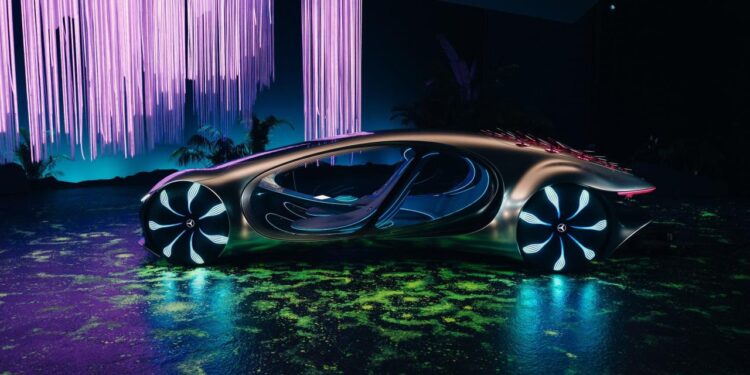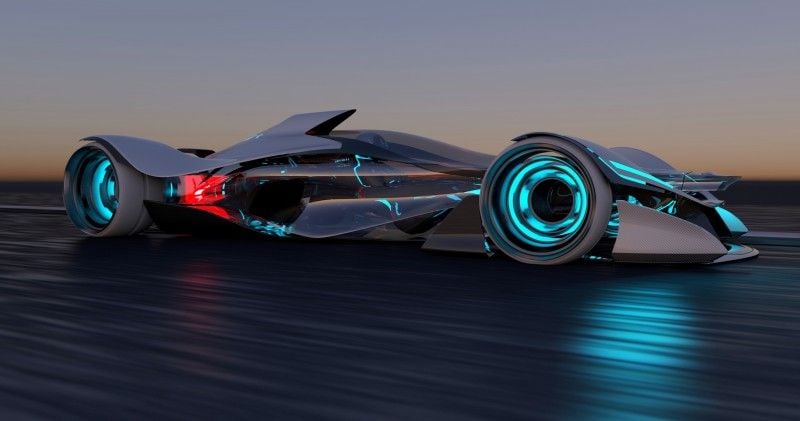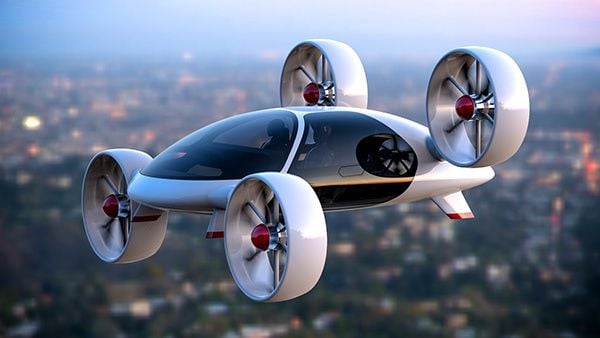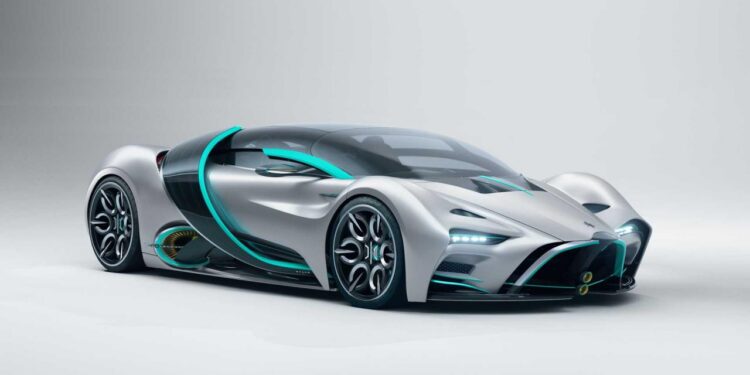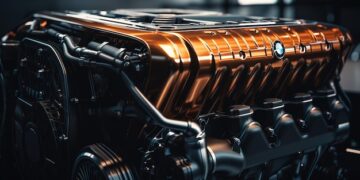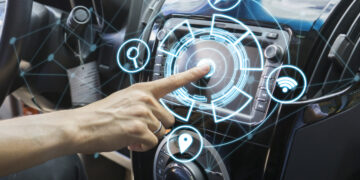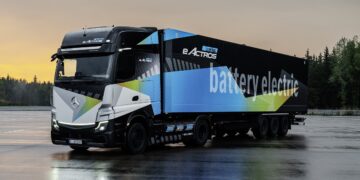In today’s rapidly evolving automotive landscape, the fusion of cutting-edge technology with high-performance engineering is reshaping the way we envision transportation. Gone are the days when raw horsepower and mechanical prowess alone defined a car’s appeal. Modern vehicles are now an intricate blend of sophisticated electronics, advanced materials, and smart connectivity—all designed to deliver not only exhilarating performance but also unparalleled safety, efficiency, and convenience. This comprehensive article delves into how future cars merge technology with performance, exploring emerging trends, innovations, and the transformative impact these developments have on the driving experience.
With consumers increasingly demanding smarter, safer, and more eco-friendly vehicles, automakers are under pressure to integrate state-of-the-art technologies into every aspect of car design. From artificial intelligence (AI) and autonomous driving systems to electric powertrains and integrated infotainment platforms, the automotive industry is entering a new era where technology is the cornerstone of performance. In the following sections, we will explore the evolution of automotive technology, how high-performance engineering is enhanced by digital innovations, and what the future holds for the world of cars.
The Evolution of Automotive Technology
The automotive industry has witnessed a monumental shift over the last century. What began as a realm of mechanical engineering and combustion engines has transformed into a sophisticated fusion of digital innovation and high-performance design. Understanding this evolution provides context for the groundbreaking advancements seen in today’s vehicles.
A. Early Developments in Car Engineering
In the early days of motoring, automobiles were powered by relatively simple internal combustion engines. The primary focus was on basic mechanics, durability, and the ability to traverse long distances. Early safety features were minimal, and the driving experience was largely defined by the mechanical limitations of the era.
B. The Digital Revolution in Automotives
As electronics began to permeate the automotive industry, the landscape started to change dramatically. The introduction of electronic control units (ECUs) in the 1980s marked the beginning of a new chapter. These digital systems allowed for more precise control over engine performance, fuel management, and even rudimentary safety features such as anti-lock braking systems (ABS). This era laid the groundwork for more complex integrations that would come later.
C. Modern Innovations and Breakthroughs
Today’s vehicles are a testament to decades of innovation. Modern cars incorporate an array of technologies that were once considered science fiction:
A. Advanced Driver Assistance Systems (ADAS): These include adaptive cruise control, lane-keeping assist, and collision avoidance systems designed to minimize accidents and enhance driver safety.
B. Connected Infotainment Systems: Today’s digital dashboards offer real-time navigation, multimedia entertainment, and seamless smartphone integration.
C. Electric and Hybrid Powertrains: In response to environmental challenges, electric vehicles (EVs) and hybrids deliver robust performance with significantly reduced emissions.
D. Autonomous Driving: The promise of self-driving cars is becoming a reality, with vehicles capable of handling many driving tasks independently.
Merging Technology With Performance
The integration of advanced technology into vehicles is not merely about adding gadgets or digital displays. It is a holistic approach that redefines the performance benchmarks of automobiles. Here’s how technology is enhancing every facet of automotive performance:
A. Smart Powertrains and Engine Management
Modern engines are no longer standalone power generators; they are part of a larger ecosystem that includes advanced sensors and computer algorithms. These systems continuously monitor various parameters to optimize power delivery and fuel efficiency. Key innovations include:
A. Turbocharging and Supercharging: These systems boost engine performance by forcing more air into the combustion chamber, leading to increased power output without sacrificing fuel economy.
B. Direct Fuel Injection: By injecting fuel directly into the combustion chamber, this technology ensures a more efficient burn and smoother power delivery.
C. Hybrid Integration: Combining the strengths of internal combustion engines with electric motors allows for rapid acceleration while maintaining energy efficiency.
B. Intelligent Suspension and Handling
The driving experience is significantly enhanced by intelligent suspension systems that adjust to road conditions in real time. These systems not only improve comfort but also enhance performance during high-speed maneuvers. Innovations in this area include:
A. Adaptive Suspension: Automatically modifies the vehicle’s damping characteristics based on the terrain and driving style, ensuring a smooth ride and improved stability.
B. Dynamic Stability Control: Continuously monitors vehicle dynamics to prevent loss of control during abrupt maneuvers.
C. Precision Steering: Advanced steering systems that use electronic inputs to adjust responsiveness, enhancing both agility and safety.
C. Digital Instrumentation and Real-Time Data
Digital dashboards and integrated displays have transformed the driving experience by providing instant access to critical vehicle data. These systems not only convey information such as speed, fuel consumption, and engine diagnostics but also integrate with navigation and entertainment systems. Benefits include:
A. Real-Time Monitoring: Instant updates on performance metrics allow drivers to adjust their driving style to optimize efficiency and safety.
B. Enhanced Navigation: Integrated GPS systems offer real-time traffic updates and route optimization.
C. Customizable Displays: Drivers can personalize the interface to prioritize the information most relevant to their driving habits.
Autonomous Driving and AI Integration
One of the most revolutionary aspects of future cars is the integration of autonomous driving technologies and artificial intelligence (AI). These advancements promise to redefine safety, convenience, and overall driving experience.
A. Levels of Autonomous Driving
Autonomous driving technology is classified into various levels, each representing a step toward complete vehicle independence:
A. Level 1: Basic driver assistance features such as adaptive cruise control and lane-keeping assist.
B. Level 2: Partial automation where the vehicle can control steering and speed under certain conditions, yet the driver must remain engaged.
C. Level 3: Conditional automation, allowing the vehicle to manage most driving tasks with human intervention required during complex scenarios.
D. Level 4: High automation, where the car can operate independently in most environments without any driver input.
E. Level 5: Full automation, where the vehicle is completely self-driving, rendering human intervention unnecessary.
B. AI-Driven Enhancements
Artificial intelligence is at the heart of modern autonomous systems. Through machine learning and complex algorithms, AI enables vehicles to process vast amounts of data from sensors and cameras to make split-second decisions. Notable applications include:
A. Predictive Maintenance: AI systems analyze data from various vehicle components to predict potential failures before they occur, minimizing downtime and enhancing reliability.
B. Intelligent Navigation: Real-time analysis of traffic patterns, weather conditions, and road hazards allows vehicles to choose the most efficient routes.
C. Enhanced Safety Features: AI-powered systems, such as collision avoidance and driver attention monitoring, significantly reduce the risk of accidents by proactively addressing potential hazards.
The Electric Vehicle Revolution
The transition to electric vehicles (EVs) is a pivotal aspect of merging technology with performance. As concerns about climate change and sustainability grow, automakers are turning to electric powertrains to deliver high performance while reducing environmental impact.
A. Breakthroughs in Battery Technology
The performance of EVs is largely dependent on the capabilities of their batteries. Recent advancements in battery technology have led to significant improvements in energy density, charging speed, and overall efficiency. Key developments include:
A. Lithium-Ion Batteries: The industry standard for EVs, these batteries offer a high energy density and long cycle life, powering vehicles over longer distances.
B. Solid-State Batteries: Representing the next frontier, these batteries promise even greater energy densities and enhanced safety features.
C. Fast-Charging Solutions: Innovations in charging technology are drastically reducing the time required to recharge, making EVs more practical for daily use.
D. Advanced Battery Management: Sophisticated systems monitor battery health, optimizing performance and extending battery life.
B. Environmental Impact and Sustainability
Electric vehicles not only offer performance benefits but also contribute to a cleaner environment by reducing greenhouse gas emissions. The shift from fossil fuels to electric power is a critical step in promoting sustainability. Environmental advantages include:
A. Lower Emissions: EVs produce zero tailpipe emissions, significantly reducing air pollution and contributing to better urban air quality.
B. Reduced Noise Pollution: Electric motors are quieter than internal combustion engines, leading to a more pleasant and peaceful driving experience.
C. Energy Diversification: By reducing reliance on oil, the widespread adoption of EVs supports energy diversification and sustainability.
Connectivity and the Internet of Things
As future cars become increasingly digital, connectivity plays a pivotal role in enhancing both performance and user experience. The integration of the Internet of Things (IoT) enables vehicles to communicate with external devices and infrastructure, opening up a world of possibilities.
A. Integrated Infotainment Systems
Modern infotainment systems are far more than just media players. They serve as the central hub for connectivity, navigation, and vehicle diagnostics. Innovations in this field include:
A. Voice-Controlled Interfaces: Allowing drivers to control various functions hands-free, enhancing safety and convenience.
B. Smartphone Integration: Seamlessly connecting mobile devices to provide access to apps, contacts, and multimedia content.
C. High-Resolution Touchscreens: Offering intuitive controls and customizable interfaces to suit individual preferences.
D. Cloud Connectivity: Enabling real-time updates and seamless integration with online services, from weather updates to streaming content.
B. Vehicle-to-Everything (V2X) Communication
The future of automotive connectivity lies in the ability of vehicles to communicate with each other and with road infrastructure. V2X communication offers several benefits:
A. Enhanced Traffic Management: Vehicles that share data can optimize traffic flow and reduce congestion by coordinating movements in real time.
B. Improved Safety: Real-time communication between vehicles can alert drivers to potential hazards, reducing the likelihood of accidents.
C. Smart Infrastructure Integration: Connected cars can interact with traffic lights, road sensors, and other infrastructure to enhance overall efficiency and safety.
Advanced Materials and Aerodynamic Design
The quest for performance has always driven innovation in car design, and the future is no exception. Modern vehicles benefit from advanced materials and aerodynamic innovations that not only enhance speed and handling but also contribute to energy efficiency.
A. Lightweight Construction
Reducing the weight of a vehicle is a proven method to boost performance, and future cars are embracing advanced materials such as:
A. Carbon Fiber: Renowned for its strength-to-weight ratio, carbon fiber is increasingly used in high-performance components.
B. Aluminum Alloys: Offering a good balance between strength and weight, these alloys are widely employed in modern car chassis and body panels.
C. Composite Materials: The integration of composites allows for innovative design solutions that enhance both structural integrity and efficiency.
B. Aerodynamic Enhancements
Aerodynamics is critical in achieving high performance. By reducing drag, cars can accelerate faster and achieve higher speeds more efficiently. Future vehicles are designed using advanced computational tools and wind tunnel testing to refine their shapes for optimal performance:
A. Streamlined Designs: Smooth, flowing lines reduce air resistance, contributing to better fuel efficiency and stability.
B. Active Aerodynamics: Technologies that adjust aerodynamic elements in real time to optimize performance based on speed and driving conditions.
The Future of Performance: Hybrid and High-Performance Models
While electric vehicles are gaining traction for their sustainability, high-performance models continue to captivate car enthusiasts. The fusion of hybrid technology and traditional powertrains is paving the way for vehicles that offer the best of both worlds.
A. Hybrid Performance Vehicles
Hybrid cars merge the instantaneous torque of electric motors with the sustained power of combustion engines. This synergy creates vehicles capable of impressive acceleration and dynamic performance while maintaining efficiency. Key aspects include:
A. Seamless Power Delivery: The transition between electric and combustion power is nearly imperceptible, offering a smooth driving experience.
B. Performance Boost: In performance-oriented hybrids, the combined output can rival or even surpass traditional high-performance cars.
C. Efficiency Optimization: Advanced control systems ensure that the hybrid powertrain operates in the most efficient manner possible under varying conditions.
B. Next-Generation Performance Metrics
Future performance vehicles are not only about raw power but also about delivering a balanced and engaging driving experience. Innovations include:
A. Enhanced Traction Control: Sophisticated systems that adjust power distribution in real time, ensuring maximum grip during acceleration and cornering.
B. Adaptive Driving Modes: Customizable settings that allow drivers to tailor the vehicle’s response to their driving style or road conditions.
C. Performance Data Analytics: Real-time feedback and performance metrics that help drivers understand and optimize their driving habits.
Overcoming Challenges in Future Car Technologies
Despite the remarkable advancements, several challenges must be addressed to fully realize the potential of future cars. These challenges span from technological integration and cybersecurity to regulatory hurdles and consumer acceptance.
A. Integrating Complex Systems
Modern vehicles are a mosaic of interdependent systems—from advanced electronics and AI to high-performance engines and sophisticated materials. Ensuring that these components work together harmoniously requires:
A. Rigorous Testing: Extensive simulations and real-world testing to verify that systems perform reliably under all conditions.
B. Modular Design Approaches: Designing components that can be updated or replaced without disrupting the entire system.
C. Collaborative Industry Efforts: Partnerships among automakers, tech companies, and suppliers to standardize protocols and streamline integration.
B. Cybersecurity and Data Protection
As cars become more connected, they also become more vulnerable to cyber-attacks. Robust cybersecurity measures are essential to protect:
A. Vehicle Software: Regular updates and secure coding practices to prevent exploitation.
B. Data Transmission: Encryption and secure networks to safeguard communication between vehicles and infrastructure.
C. User Privacy: Ensuring that personal data collected by connected systems is handled with strict confidentiality.
C. Regulatory and Market Challenges
Innovative technologies often face hurdles in the regulatory domain. Balancing innovation with compliance involves:
A. Meeting Safety Standards: Ensuring that all new technologies adhere to or exceed regulatory safety benchmarks.
B. Environmental Regulations: Aligning performance improvements with sustainability goals and emission standards.
C. Consumer Education: Informing the public about the benefits and safety of new technologies to foster widespread adoption.
Looking Forward: A New Era in Automotive Excellence
The road ahead for the automotive industry is filled with promise and potential. Future cars will not only continue to push the boundaries of performance but also redefine what it means to drive in a connected, intelligent world.
A. Embracing Renewable Energy
The integration of renewable energy sources into automotive design is set to gain momentum. From solar-assisted charging systems to vehicles that harness kinetic energy, the move toward greener technologies is accelerating. This shift promises:
A. Reduced Carbon Footprint: Cleaner energy solutions contribute to a more sustainable future.
B. Energy Independence: Diversifying power sources to reduce reliance on traditional fuels.
C. Innovative Charging Solutions: Integration of renewable energy with advanced battery systems to support long-range driving.
B. The Era of Continuous Innovation
Automakers are now in a race to continuously innovate. The dynamic interplay between performance and technology is driving unprecedented levels of research and development. Future vehicles will benefit from:
A. Over-the-Air Updates: Continuous software improvements that enhance vehicle performance and add new features without requiring service visits.
B. Customization and Personalization: Vehicles that learn driver preferences and adjust systems to deliver a bespoke driving experience.
C. Collaborative Ecosystems: Integration with smart city infrastructure and IoT devices to create a connected transportation network.
Conclusion
The future of automobiles is bright, driven by the seamless integration of advanced technology and high-performance engineering. Future cars are poised to offer a transformative driving experience that is not only faster and more efficient but also smarter and safer. From intelligent powertrains and adaptive suspension systems to AI-driven safety features and renewable energy integration, the next generation of vehicles will redefine the boundaries of what is possible.
As we look forward to a new era in automotive innovation, it becomes clear that the fusion of technology and performance is not merely a trend—it is the foundation of a more sustainable, efficient, and enjoyable driving experience. Automakers, technology companies, and regulatory bodies must work together to overcome the challenges of integration, cybersecurity, and consumer adoption. By doing so, they will usher in a future where cars are not only a means of transportation but also a manifestation of human ingenuity and technological progress.
The journey toward these advancements is continuous, with every new breakthrough bringing us closer to vehicles that can truly transform our daily lives. The era of smart, high-performance cars is upon us, and it promises to deliver a driving experience that is as dynamic and exciting as it is safe and sustainable.

